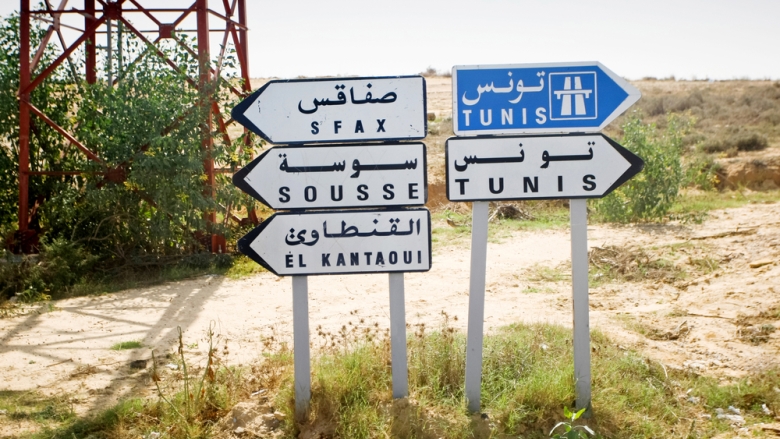Can modern Tunisia learn from the Romans? Two thousand years ago, as part of a trans-North Africa highway, the Romans built a road that linked ports on the Mediterranean coast of what’s now Tunisia. From them, other roads struck deep into the interior of North Africa.
Today, the old ports have new names and modern highways connect them, but fewer modern roads have been built in Tunisia’s agricultural hinterland. A medium-term US$230 million World Bank project to widen regional roads connecting cities inland to cities on the coast is seen as a way of opening-up neglected areas of the country. It will be several years before the roads are done but, in time, they could put Tunisia in a stronger position to weather economic setbacks—such as that caused this year to the country’s important tourism sector, for example, by two separate terrorist attacks on tourists.
Tourism accounts for at least 7% of Tunisia’s GDP, and according to World Bank estimates, had already declined by 22% in the first six months of this year before a second attack in June. Despite more political freedom since the end of a long era of political dictatorship in the 2011 Arab Spring, economically, Tunisia has become a more—not less—unequal society in the past decade.
Its richer coast is at odds with its poorer interior. A stretch of highway skirts the coast between the cities of Bizerte and Sfax, for example, but away from the coast, drivers can find themselves on narrow, two-lane roads blocked with heavy trucks carrying agricultural produce. (Although it has rail network, 80% of goods are moved by road in Tunisia.) Its largest coastal cities—Tunis, Sfax and Sousse—account for a whopping 85% of its GDP and most of its industries and services. Pockets of poverty in coastal areas are said to be nothing like as widespread as rural poverty inland.
Improved roads demonstrate public commitment to poorer areas where many people feel forgotten by government. The Center-West is an area that has seen public demonstrations since the revolution began there in 2010 in Sidi Bouzid, part of Tunisia’s second poorest region where 20% of adults are out of work. About 65km of Route Nationale 4 to the city of Siliana is due to be widened from two- to four-lanes to carry the heavier volume of traffic it is already experiencing and support future traffic coming from improved connectivity.
The Road Transport Corridor project marks the Bank’s first engagement with road improvement and management in Tunisia in ten years. "For me, the most important thing is that we are reestablished as an important partner in the Government’s response to the development and citizen's needs in lagging regions," says Vickram Cuttaree, Senior Infrastructure Economist. It took the Bank team about a year to fully understand how Tunisia’s road sector was managed and performing, finding common ground between Bank policies and local practice following the revolution.
The two other scheduled road upgrades are a 56km section of the Route Nationale 12 from the tourist resort city Sousse to Kairouan. Another 25km road in more industrialized areas just outside the Tunisian capital of Tunis from the governorate of Zaghouan, the country’s third poorest region.
Improving road safety is also part of the upgrade, with plans for better storm culverts, bridges, traffic signs, and intersections. Although Tunisia’s accident rate fell from 2008 to 2011, the Tunisian government and World Health Organization reported 1,200 to 2,000 deaths, mostly of passengers and drivers in vehicles on national and regional highways, as opposed to pedestrians or cyclists knocked down on city streets.
The roads project is seen as just the beginning of more high-impact Bank projects targeting poorer, more underdeveloped areas of Tunisia.

